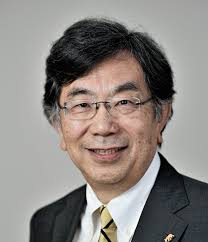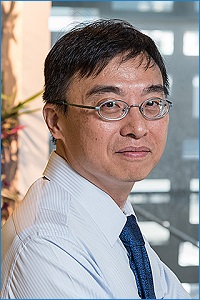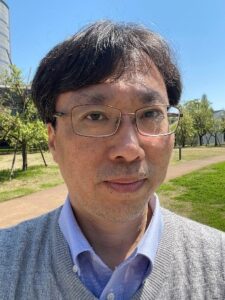Plenary Speech I
Time: 11:10 ~ 12:00
Location: International Conference Hall, B1 Level of Engineering Bldg. 5
| Autonomous Intelligent and SWARM Control of Robots in Harsh Environment
Prof. Masayoshi Tomizuka Jr. Distinguished Professor of National Academy of Engineering Cheryl and John Neerhout Department of Mechanical Engineering University of California, Berkeley |
 |
Abstract:
Natural disasters are recurring events. In Japan, such disasters occur due to earthquakes, tsunamis, landslides, typhoons, and so on. Current practice of disaster response includes warning by the Meteorological Agency, information dissemination by media (SNS, Internet, TV, Radio…) and rescue operation by Fire and Disaster Management Agency, National Police Agency and Japan Ground Self-Defense Force. Robots have been utilized in many ways such as exploration and searching in spaces too narrow for humans to enter, investigation in lieu of humans in dangerous areas, assessment of damage status, air delivery of foods and medicines by drones, and so on. The usage of robots and drones, however, have not been fully exploited. It is desired to rescue as many victims as possible during the first 72 hours after the occurrence of disaster. The Fukushima Institute for Research, Education and Innovation (commonly known as F-REI) is a special corporation established on April 1, 2023 under the Act on Special Measures for the Reconstruction and Revitalization of Fukushima. Fukushima was hit hard by the Great East Japan Earthquake on March 11, 2011 followed by tsunami and serious damages of the Fukushima Daiichi nuclear disaster. Division 1 (Robotics) of F-REI is engaged in research and development of robots and drones more deployable to a larger set of disasters. Research and development efforts of this unit are directed to 1) collaborative control of synergistic use of UAVs (Unmanned Aerial Vehicles) and UGVs (Unmanned Ground Vehicles) to share roles and respond to various tasks during disasters, 2) collaborative system between UAV/UGV robot groups and humans, and 3) AI technologies to support coordinated control and collaborative systems. Progresses made by principal members of the unit will be reported along with the demonstration planned for the spring of 2026.
Biography:
Masayoshi Tomizuka (Life Fellow, IEEE) was born in Tokyo, Japan, in 1946. He received the B.S. and M.S. degrees in mechanical engineering from Keio University, Tokyo, in 1968 and 1970, respectively, and the Ph.D. degree in mechanical engineering from the Massachusetts Institute of Technology, Cambridge, MA, USA, in 1974.,In 1974, he joined the Faculty of the Department of Mechanical Engineering, University of California at Berkeley, Berkeley, CA, USA, where he is currently the Cheryl and John Neerhout, Jr., Distinguished Professorship Chair and teaches courses in dynamic systems and controls. From 2002 to 2004, he was the Program Director of the Dynamic Systems and Control Program of the Civil and Mechanical Systems Division of NSF. His current research interests include optimal and adaptive control, digital control, signal processing, motion control, and control problems related to robotics, machining, manufacturing, information storage devices, and vehicles.Dr. Tomizuka was the Technical Editor of the ASME Journal of Dynamic Systems, Measurement and Control (J-DSMC) (1988–1993), Editor-in-Chief of IEEE/ASME Transactions on Mechatronics (1997–1999), and an Associate Editor for the Journal of the International Federation of Automatic Control, and Automatica. He was the General Chairman of the 1995 American Control Conference, and was the President of the American Automatic Control Council (1998–1999). He is a Life Fellow of the ASME and a Fellow of the International Federation of Automatic Control (IFAC) and the Society of Manufacturing Engineers. He was the recipient of the Best J-DSMC Best Paper Award (1995 and 2010), DSCD Outstanding Investigator Award (1996), Charles Russ Richards Memorial Award (ASME, 1997), Rufus Oldenburger Medal (ASME, 2002), John R. Ragazzini Award (AACC, 2006), Richard E. Bellman Control Heritage Award (AACC, 2018), Honda Medal (ASME, 2019), and Nathaniel B. Nichols Medal (IFAC, 2020). He is a member of the National Academy of Engineering.
Plenary Speech II
Time: 13:10 ~ 14:00
Location: International Conference Hall, B1 Level of Engineering Bldg. 5
| Brain Computer Interface in Augmented Reality and Metaverse
Prof. Chin-Teng Lin University of Technology Sydney, Australia. |
 |
Abstract:
Brain-Computer Interface (BCI) enhances the capability of a human brain in communicating and interacting with the environment directly. BCI plays an important role in natural cognition, which is to study the brain and behavior at work. Human cognitive functions such as action planning, intention, preference, perception, attention, situational awareness, and decision-making are omnipresent in our daily life activities. BCI has been considered as the disruptive technology for the next-generation human computer interface in wearable computers and devices. In addition, there are many potential real-life impacts of BCI technology in both daily life applications for augmenting human performance, and daily care applications for elder/patients healthcare in real world and virtual world. Talk focus will be the applications of BCI technology on AR-based brain robot interface, BCI-based assistive glasses for the blind, Biofeedback for chronic pain mitigation, and BCI-based human-machine cooperation. The potential applications of BCI in the coming Metaverse will be also introduced in this talk.
Biography:
Chin-Teng Lin received the B.S. degree from the National Chiao-Tung University (NCTU), Taiwan in 1986, and the Master and Ph.D. degree in electrical engineering from Purdue University, West Lafayette, Indiana, U.S.A. in 1989 and 1992, respectively. He is currently a Distinguished Professor, Director of UTS Human-centric AI Center, Co-Director of Australian AI Institute, and Director of CIBCI Lab, FEIT, UTS. He is also invited as the International Faculty of the University of California at San Diego (UCSD) from 2012 to 2020 and Honorary Professorship of University of Nottingham from 2014 to 2021.
Prof. Lin’s research focuses on machine-intelligent systems and brain computer interface, including algorithm development and system design. He has published over 460 journal papers (H-Index 98 based on Google Scholar) and is the co-author of Neural Fuzzy Systems (Prentice-Hall) and author of Neural Fuzzy Control Systems with Structure and Parameter Learning (World Scientific). Dr. Lin served as Editor-in-Chief of IEEE Transactions on Fuzzy Systems from 2011 to 2016 and has served on the Board of Governors of IEEE Circuits and Systems Society, IEEE Systems, Man, and Cybernetics Society, and IEEE Computational Intelligence Society. He is the Chair of the 2022-2023 CIS Awards Committee. Dr. Lin is an IEEE Fellow and received the IEEE Fuzzy Pioneer Award in 2017. He received the UTS Chancellor’s Medal of Research Excellence in 2015.
Plenary Speech III
Time: 14:00 ~ 14:50
Location: International Conference Hall, B1 Level of Engineering Bldg. 5
| Topological Intelligence for Human-Robot Interaction Prof. Naoyuki Kubota Professor in the Department of Mechanical Systems Engineering, the Graduate School of Systems Design, Tokyo Metropolitan UniversityDirector of Community-centric Systems Research Center, Tokyo Metropolitan University, Japan. |
 |
Abstract:
Human-robot interaction is one the most important researches in robotics. With the rapid progress of sensing technology, network technology, and machine learning technology, we can realize real-time recognition of human behaviors in human-robot coexisting environments, but we need cyber-physical system integration and analysis. In order to perform multiscale and multiphysics simulations of a real-world phenomenon, we should extract and use topological features and structures from real-time measurement data. Therefore, we proposed the concept of topological twin. The goal of topological twin is to (1) extract topological structures implicitly hidden in the real world, (2) explicitly reproduce them in the cyber world, and (3) simulate and analyze real-world phenomena in the cyber world. Furthermore, we need to deal with inference, learning, search, and prediction based on topological and graphical data as a methodology of topological intelligence. In this talk, we discuss the importance of topological twin in human-robot interaction. Next, we explain various types of topological clustering methods and graph-based methods related to topological intelligence. Next, I show experimental results of topological intelligence for mobility support robots and human support robots. Finally, I discuss the applicability and future directions of topological intelligence in robotics.
Biography:
Naoyuki Kubota is currently a Professor in the Department of Mechanical Systems Engineering, the Graduate School of Systems Design, and Director of Community-centric Systems Research Center, Tokyo Metropolitan University, Japan. He received a doctoral degree from Nagoya University, Japan, in 1997. He joined Osaka Institute of Technology and Fukui University, Japan. He was an Associate Professor from 2005 to 2012, and a Professor from 2012 at the Graduate School of Systems Design, Tokyo Metropolitan University, Japan. He was a Visiting Professor at University of Portsmouth, UK and Seoul National University, and others. His current interests are in the fields of topological mapping, coevolutionary computation, spiking neural networks, robot partners, and informationally structured space. He has published more than 500 refereed journal and conference papers in the above research fields. He was an associate editor of the IEEE Transactions on Fuzzy Systems from 1999 to 2010, the IEEE CIS Intelligent Systems Applications Technical Committee, Robotics Task Force Chair from 2007 to 2014, IEEE Systems, Man, and Cybernetics Society, Japan Chapter Chair from 2018 to 2021, IEEE Transactions on Affective Computing Steering Committee Member since 2019, and others.
